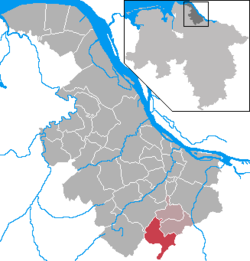
Count Gustaf Adolf Levenhaupt was a Swedish soldier and statesman.

Bremen-Verden, formally the Duchies of Bremen and Verden, were two territories and immediate fiefs of the Holy Roman Empire, which emerged and gained imperial immediacy in 1180. By their original constitution they were prince-bishoprics of the Archdiocese of Bremen and Bishopric of Verden.
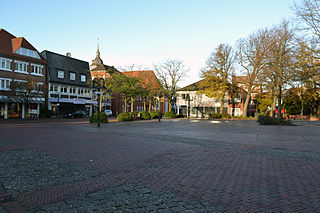
Bremervörde is a town in the north of the district (Landkreis) of Rotenburg, in Lower Saxony, Germany. It is situated on the Oste river near the centre of the "triangle" formed by the rivers Weser and Elbe, roughly equidistant from the cities of Hamburg, Bremen and Cuxhaven.
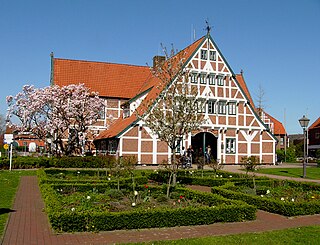
Jork is a small town on the left bank of the Elbe, near Hamburg (Germany).

Himmelpforten is a municipality west of Hamburg (Germany) in the district of Stade in Lower Saxony. It is located on the Horsterbeck creek. Himmelpforten is also part and the seat of the Samtgemeinde Oldendorf-Himmelpforten.
Dr. Jens Grand, the Firebug was a Danish archbishop of Lund (1289–1302), titular Archbishop of Riga and Terra Mariana (1304–1310), and Prince-Archbishop of Bremen, known as the central figure of the second ecclesiastical struggle in Denmark in the late 13th century. He was an outstanding jurist of canon law.

Neuhaus an der Oste is a municipality in the district of Cuxhaven, in Lower Saxony, Germany.

Selsingen is a municipality in the district of Rotenburg, in Lower Saxony, Germany. It is situated approximately 15 kilometres (9.3 mi) southeast of Bremervörde, and 45 kilometres (28 mi) northeast of Bremen, and is twinned with the English village of Sawston in Cambridgeshire.

Sittensen is a municipality in the district of Rotenburg, in Lower Saxony, Germany. It is situated approximately 20 km northeast of Rotenburg, and 45 km southwest of Hamburg.

Ottersberg is a municipality in the district of Verden, in Lower Saxony, Germany. It is situated approximately 20 km north of Verden, and 28 km east of Bremen.

Flögeln is a village and a former municipality in the district of Cuxhaven, in Lower Saxony, Germany. Since 1 January 2015 it is part of the town Geestland.
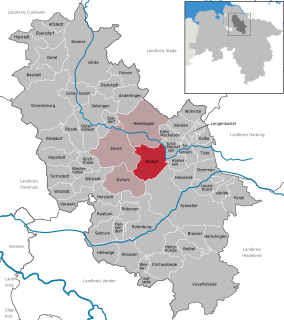
Elsdorf is a municipality in the district of Rotenburg, in Lower Saxony, Germany.

Mittelnkirchen is a municipality in the district of Stade, Lower Saxony, Germany.
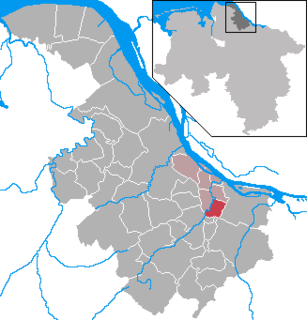
Neuenkirchen is a municipality in the Altes Land, district of Stade, Lower Saxony, Germany.

Rübke (help·info) a village located in the north of Lower Saxony, Germany. Its population is approximately 500 and consists of two main roads.

Cranz is a quarter in the Harburg borough of Hamburg, Germany. It is on the left bank of the Elbe river and one of the 104 quarters of Hamburg. In 2016 the population was 826.
Valdemar Knudsen was a Danish clergyman and statesman. Valdemar was Bishop of Schleswig from 1188 to 1208, officiated as Steward of the Duchy of Schleswig between 1184 and 1187, and served as Prince-Archbishop of Bremen from 1192 to 1194 and again between 1206 and 1217. He held the latter office on the grounds of the archdiocesan capitular election as archbishop elect and of the royal investiture with the princely regalia, but lacked the papal confirmation.

Francop is a quarter in the Harburg borough of the Free and Hanseatic city of Hamburg in northern Germany. In 2016 the population was 672.
Frederick of Saxe-Lauenburg (1554–1586), was a cathedral canon at Strasbourg Minster, chorbishop at Cologne Cathedral and cathedral provost (Dompropst), a function including the presidency of the chapter, at Bremen Cathedral.




